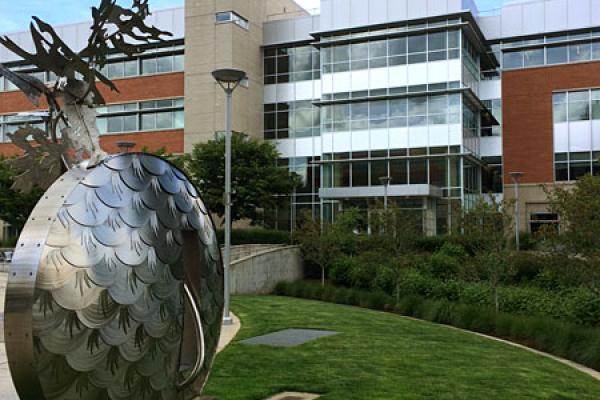
In 2015, the Oregon Legislature directed Clackamas County to study the possibility of creating a cooperative forestry program. This program became known as the Clackamas Forestry Product Cooperative Program, otherwise known as the Clackamas Urban Lumber Program.
The purpose of the project is to develop a statewide model for counties to establish cooperatives. This cooperative model would provide for the commercial production and marketing of specialty lumber products on non-forest lands in urban areas. The goals are to promote economic development and generate new public revenues for communities across Oregon.
Demand for urban lumber
Currently there is no efficient method of harnessing valuable lumber from trees grown in cities. Typically, a dying, diseased, or hazardous tree is cut down and either chipped or used for firewood. This eliminates potential value of the resource for use by specialty hardwood mills and a loss of potential income.
Specialty hardwood trees, grown in urban areas, could provide great economic and environmental benefits, if planted and managed with the intention of harvest. This innovative concept has the potential to yield significant benefits for Clackamas County, its cities, and the State of Oregon.
Research findings
Feasibility
Given current constraints, the program is not feasible due to high maintenance costs and lack of intermittent revenue from planting to harvesting.
- Net present value of program losses range from $603,541 to $4 million (depending on interest rates).
- If zero interest rate is assumed, the program would generate an ROI of 2.1% over 70 years.
However, when ecosystem services are included, the program does provide economic benefits during an enrolled tree's lifetime, in addition to revenue from strategic harvests.
- When ecosystem services are included, the program generates $19.7 to $76.9 million over 70 years.
Despite the significant economic benefit, quantified ecosystem services are challenging to monetize. Carbon sequestration credits are a likely source of funding to offset maintenance costs and provide periodic revenue.
Available land
- Approximately 1,559 acres of municipal-owned land within the urban areas of Clackamas County are available for the urban lumber program.
Final recommendations
- Pursue Urban Carbon Certification – and other ecosystem service credits – to reduce maintenance costs and provide revenue during the first 60 years of an Urban Lumber tree's lifetime.
- Quantify the avoided costs of current urban forest management practices if a community decided to adopt an Urban Lumber program.
- Expand the landbase analysis to identify more land for planting and scale down costs.
These cost-saving measures would provide intermittent revenue during the lifetime of Urban Lumber trees and supplement the program overall. The work to date on the project has generated tremendous interest due to its innovative approach to using a resource that is often wasted. From planting to harvest, municipalities can collaborate around an Urban Lumber program and enjoy the economic and ecosystem co-benefits from planting more trees in their communities.
Reporting the findings
We have reported our findings to the 2017 State Legislature. At this time, we are recommending a short continuation of the feasibility study to monetize ecosystem service benefits to offset planting and maintenance costs during the lifetime of the enrolled trees.
By supplementing these costs, the program would be sustainable over the long lifetime of trees until harvest. Based on these findings, the Legislature will determine next steps on potential program implementation.
Program status
The pilot project will not include any enrollment, planting, or harvesting of trees. Those with individual and immediate tree concerns should contact a professional arborist or urban wood sawyer prior to tree removal.
Contact
Samantha Wolf, Project Coordinator
503-742-4685
 Translate
Translate






